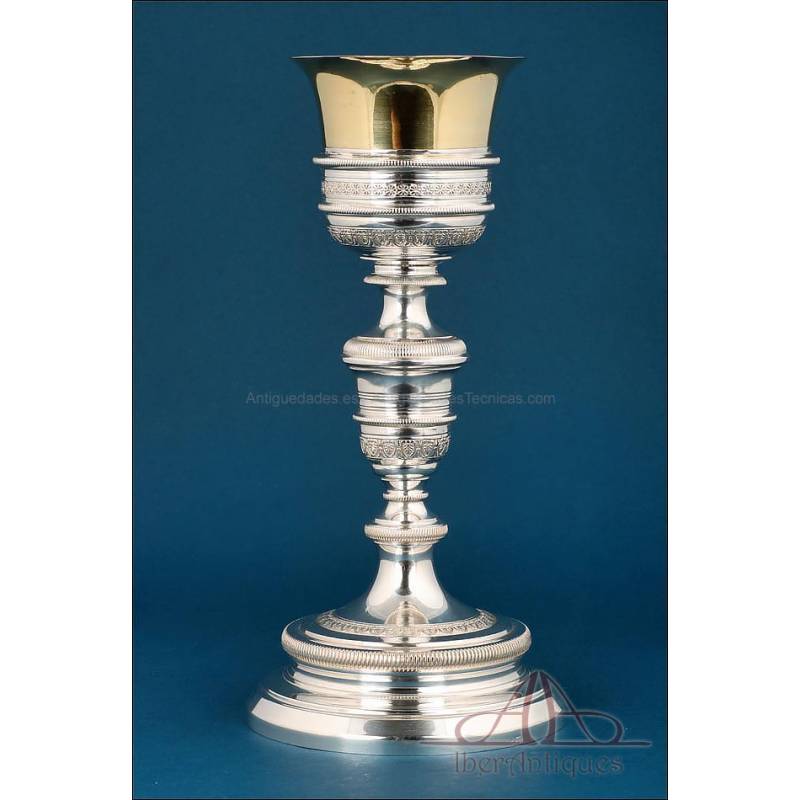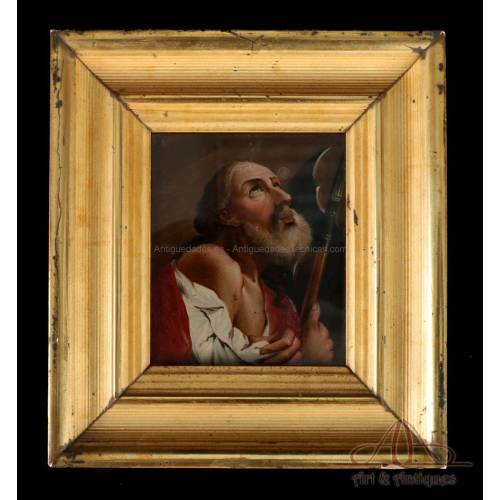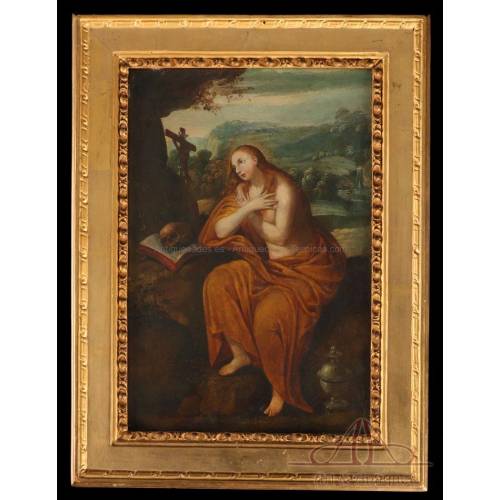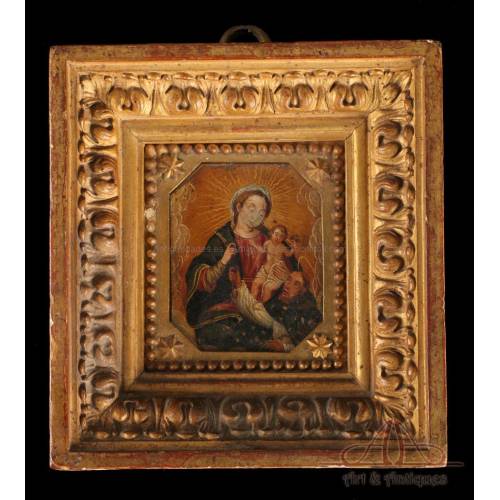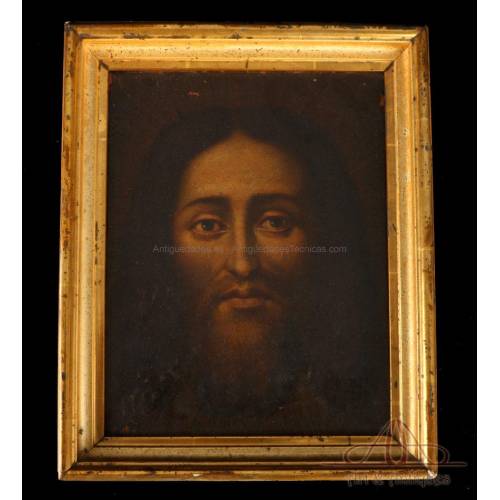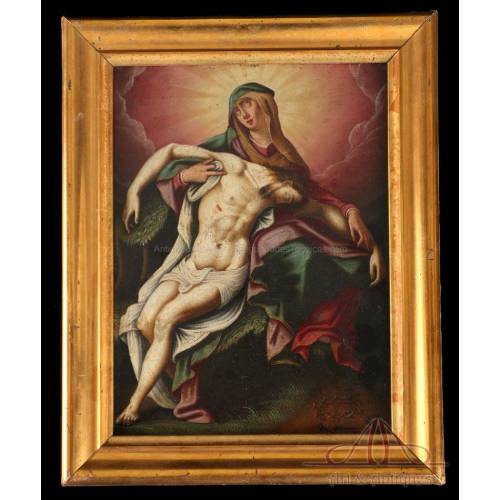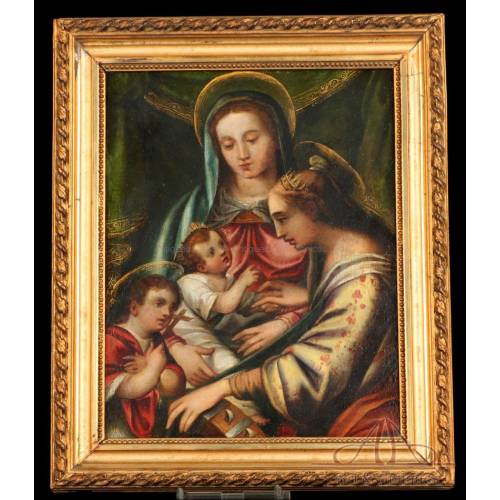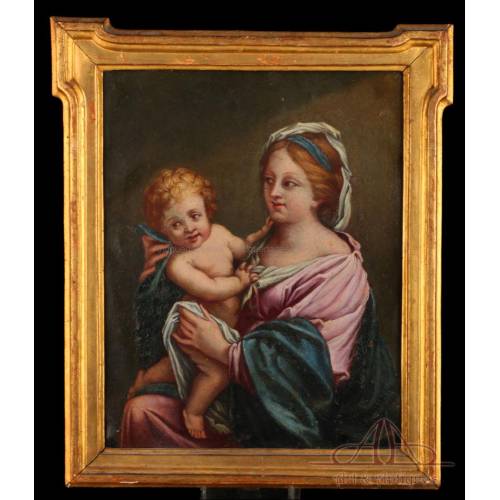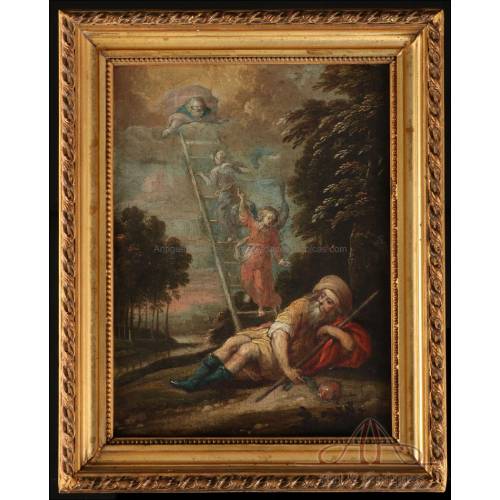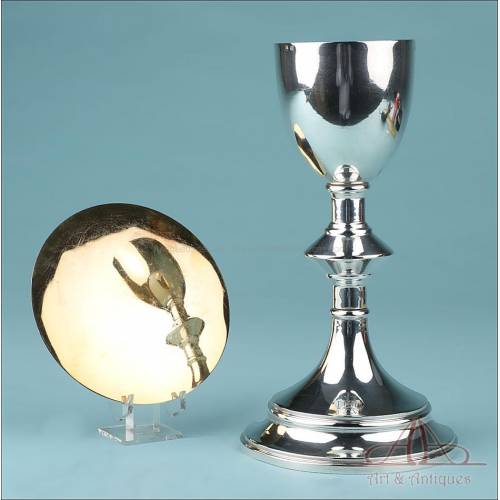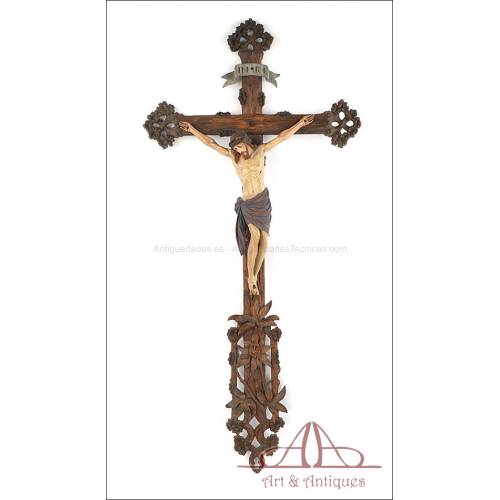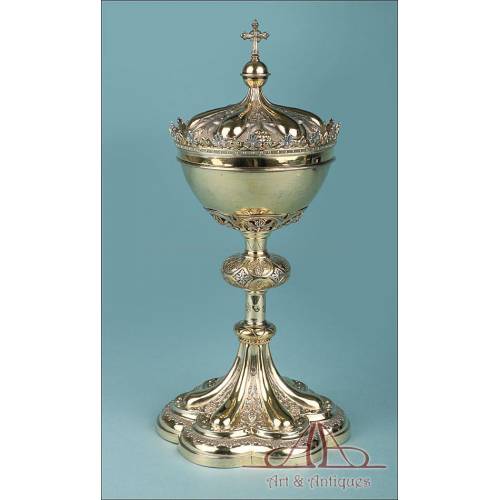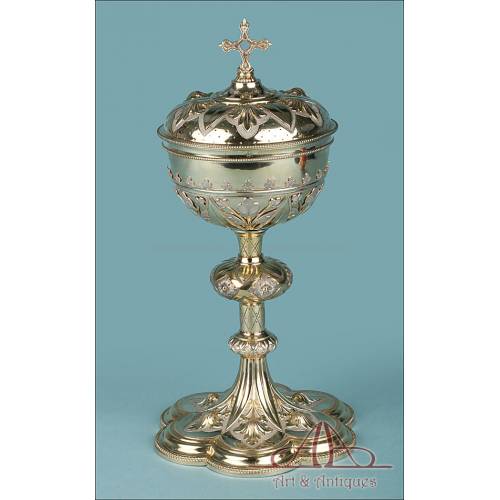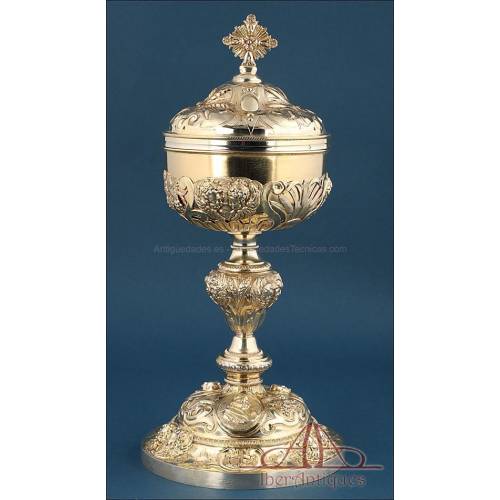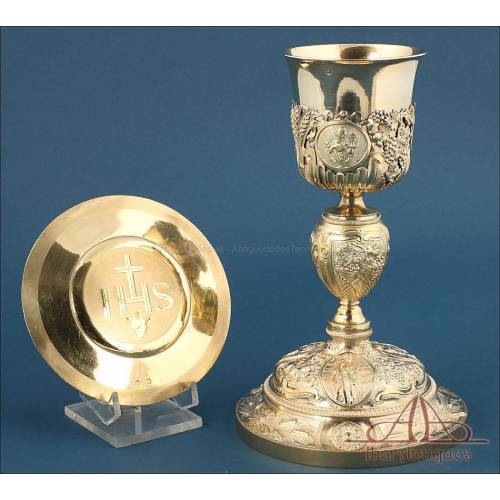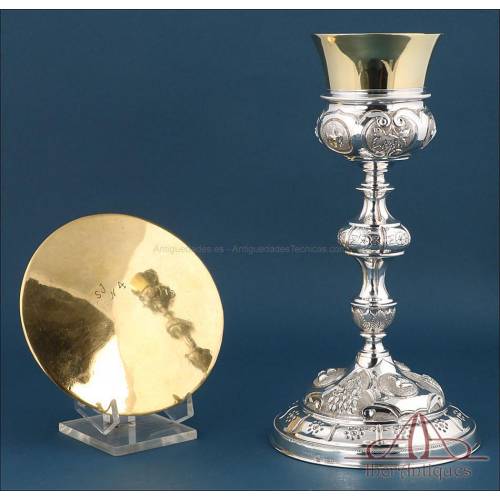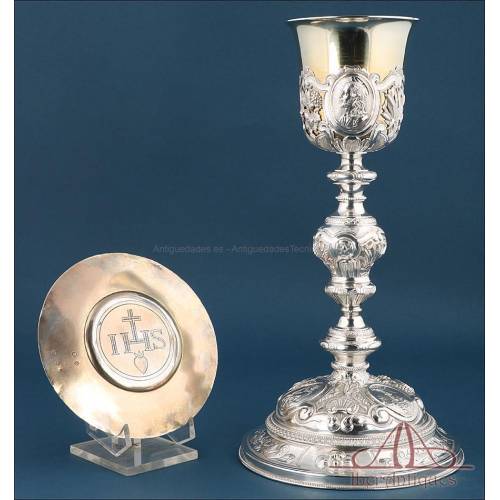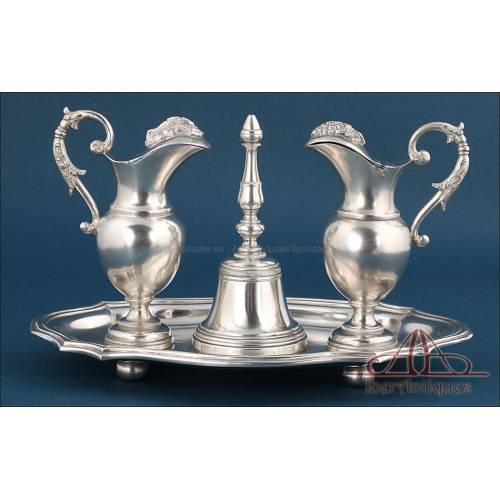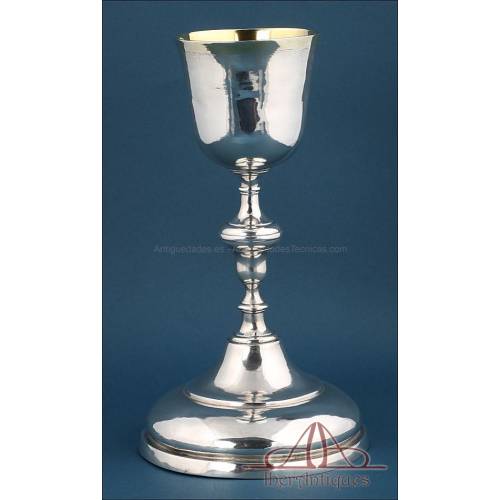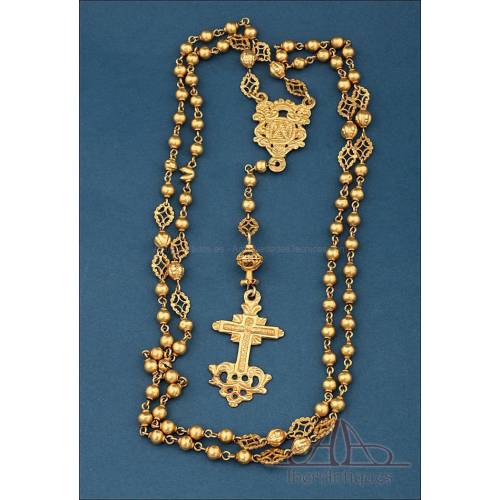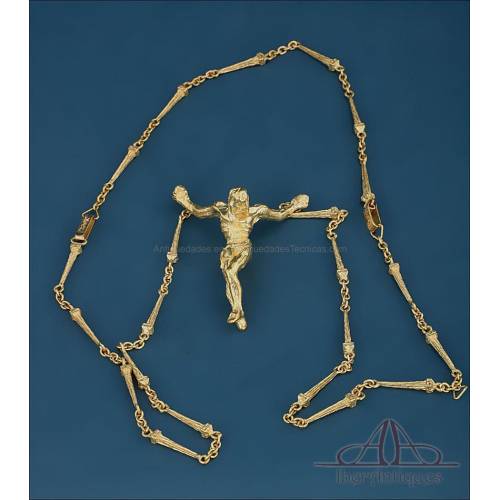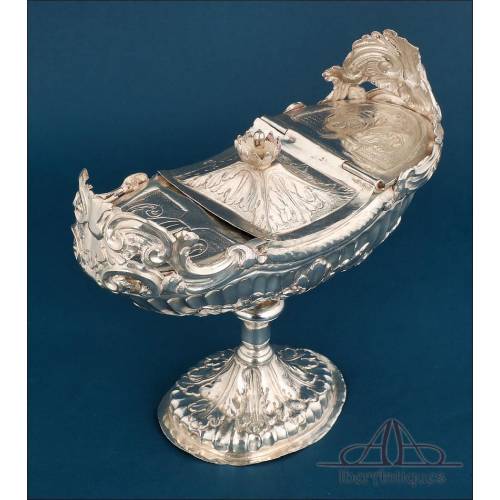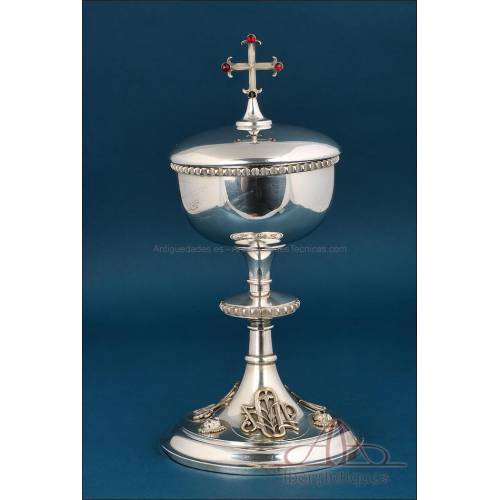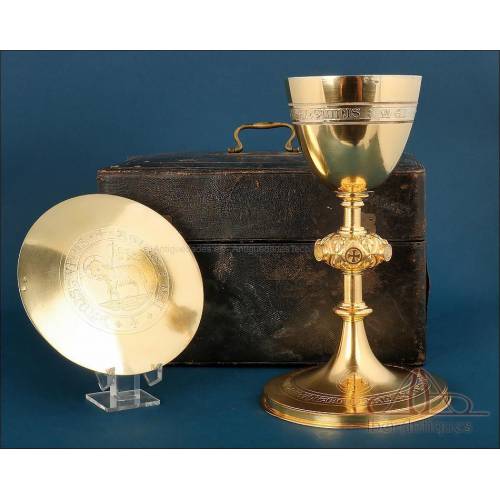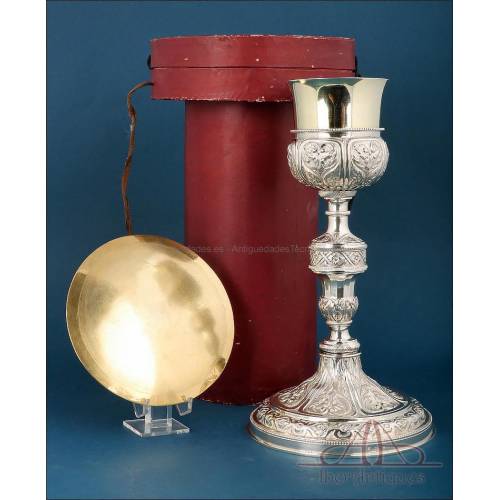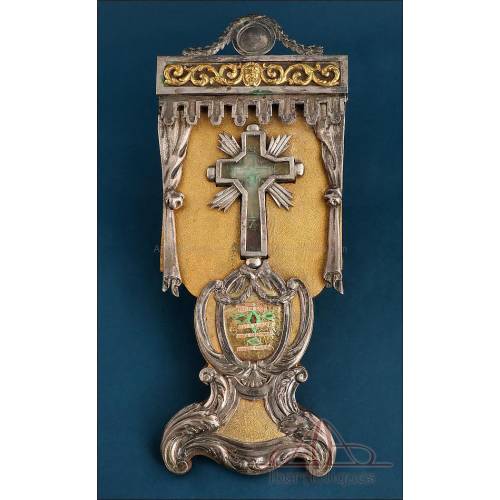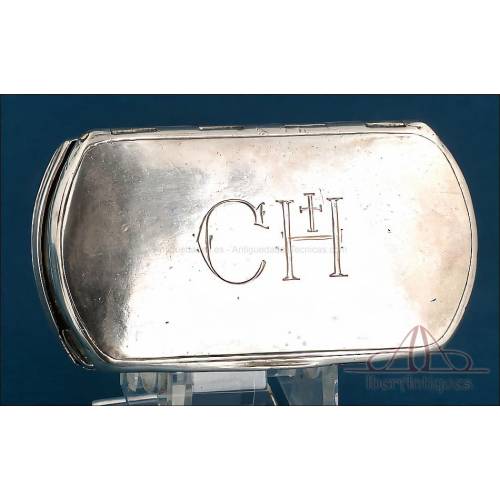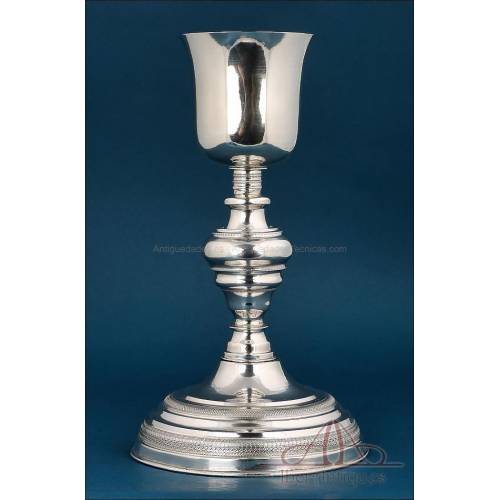E-108
19th Century Antique Silver Chalice in Perfect Condition
19th century silver chalice in perfect condition with gilded cup. Features hallmarks, including a lion's head and 925 stamp indicating sterling silver. A beautiful liturgical item.
Sold!
19th Century Antique Silver Chalice in Perfect Condition
This beautiful silver chalice, dating from the 19th century, is a piece of undeniable value, both for its impeccable condition and its detailed craftsmanship. The cup, finely gilded both inside and outside, shines with a soft and warm glow, elevating the majesty of the chalice. With a robust yet elegant structure, this piece is crafted from sterling silver, as evidenced by the “925” hallmark engraved on the base, a symbol of its purity. The upper cup carries an additional hallmark, the lion's head, whose origin remains unidentified, adding an element of mystery and potential rarity to this magnificent work.
The intricate engraving on the base and stem of the chalice displays meticulous craftsmanship. Decorated with classic geometric and floral patterns, the chalice radiates a harmonious blend of sobriety and ornamentation. The proportions are perfect, making this piece not only a functional item for liturgy but also an exquisite collector's object. The gilded silver interior of the cup, an element designed to enhance its ecclesiastical use, remains in perfect condition, showing the same original glow as when it was crafted more than a hundred years ago.
In terms of functionality, this chalice would be ideal for reintroduction into church service, perfect for use in the Eucharist or as a prominent item of worship in any parish. Its intact design and brilliant condition make it a unique object, hard to find in such good condition, with no signs of wear or defects that detract from its beauty or value. A true testament to 19th-century sacred art.
This chalice would not only stand out in a religious ceremony but would also bring a touch of history and solemnity to any private collection of liturgical antiques. A must-have piece for those looking for a sacred art masterpiece that represents the splendor of the 19th century.
An exceptional opportunity to acquire such a unique and special item that has endured in almost immaculate condition. Perfect for collectors or religious antique lovers who appreciate both its artistic value and functionality.
Dimensions: 23 cm (9.06 in) height, 11.5 cm (4.53 in) diameter at the base, 8.2 cm (3.23 in) diameter at the cup. Weight: 280 g.
History of the Chalice
Chalices, used since ancient times in liturgical ceremonies, have always been pieces of profound symbolic and artistic value. These vessels, intended to hold wine during the Eucharistic celebration, have evolved in terms of design and materials over the centuries. In the 19th century, the rise of artisanal production and refinement in precious metalwork made the chalice an essential piece for the church, both in its use and its capacity to reflect divine splendor through artistic beauty.
During this period, many workshops dedicated to the creation of liturgical objects flourished, especially in Europe, though some chalices are not clearly marked with their city of origin, as in this case. However, quality hallmarks, such as the "925" stamp, assure us of the purity of the metal, and animal figures like the lion's head were common in some countries to certify the authenticity of the materials used.
The gilding of the cup was, and still is, a typical feature of the finest chalices, as gold not only symbolizes divinity but is also a metal that does not react with wine, preserving both the liquid and the integrity of the cup. This type of interior gilding, combined with the silver exterior, offered a perfect balance between durability and beauty, making these chalices not just liturgical tools but true works of art.
The preservation of pieces like this chalice, especially in such good condition, adds value not only historically but also from a heritage perspective, as they are a testament to the devotion and religious art of an era when liturgical objects were not only functional but also reflected the spirituality and status of the churches that owned them.

